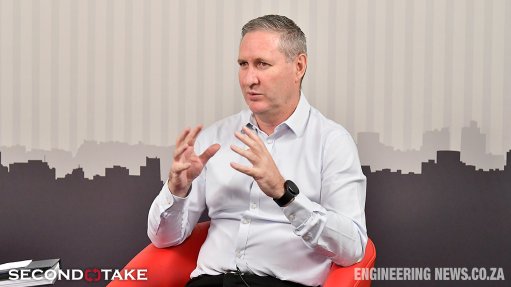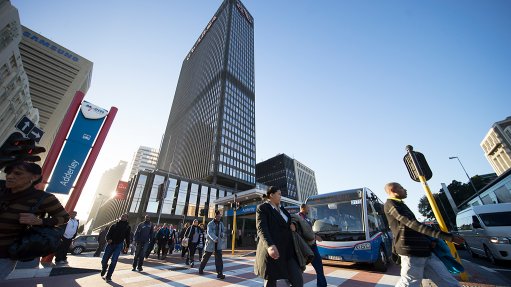Bilateral DFFE on Carbon Budget Methodologies 6 August 2021
This article has been supplied as a media statement and is not written by Creamer Media. It may be available only for a limited time on this website.
Carbon Budgets are currently still a voluntary process where companies still have the choice to participate in this process. If they do participate they receive a carbon budget allowance to reduce their carbon tax liability. However from 1 January 2023, carbon budgets will become mandatory and will be regulated under the Climate Change Act. A carbon budget is the permitted carbon emissions allocated to a company for a five-year period as agreed with by the Department of Forestry, Fisheries and the Environment (DFFE). As the carbon budget process has been voluntary to date, the proposed method on how carbon budgets will be allocated in the mandatory phase is currently still under development.
As a result a bilateral was held with the DFFE on 06 August 2021 on the ongoing carbon budget methodology proposed for mandatory carbon budgets.
The proposed principles will be informed by the Climate Change Act, as well as Regulations for Carbon Budget and Mitigation Plans (previously pollution prevention plans). The key proposed principles for the first allocation phase are listed below.
Carbon budgets are to be allocated according to a tiered method approach, with the Mitigation Potential Analysis or MPA-Based and product level benchmarking methods being the preferred methods.
The fixed target approach is only to be applied where the MPA and Product level Benchmarking methods are not possible to implement in a sector.
Consultants have been appointed to update the MPA as well as the product level benchmarks – the work is expected to be concluded by December 2021.
SAGERS is currently being updated to allow all reporting to take place on a single platform.
Once the Climate Change Act and supporting carbon budget regulations are promulgated, a set of listed activities will be defined which will required carbon budget allocations irrespective of the emissions size.
For non-listed activities, a threshold of 30 000 tonnes CO2e is being considered. These activities will also be allocated a carbon budget and will be required to develop mitigation plans.
The implications for exceeding a carbon budget have not yet been clearly defined. We will continue to monitor developments on this.
The below diagram provides a high-level summary of the key points of discussion.
Key impact for companies:
Companies need to already start preparing for this now. In other word, business processes need to be put in place to ensure that GHG data is accurate, credible and verifiable.
Processes need to be put in place to ensure that GHG assertions are verified annually prior to GHG submission to the DFFE.
Processes also need to be put in place to implement higher Tier reporting methodologies.
In addition, companies need to plan and implement GHG emission reduction projects which will need to be reported on in mitigation plans.
Reports to be prepared under the mandatory carbon budget/mitigation commitment periods (2023- 2027) are:
Beginning of the commitment period (Most likely by October 2022):
- Carbon budget and mitigation plan allocation report
- Independent verification report (mandatory – optional for the 1st commitment period)
During the commitment period (annually – most likely by May each year):
- Annual carbon budget and mitigation plan progress report
- Independent verification report (case-by-case basis)
End of Commitment Period (Most likely by January 2028)
- True-up period report (reconciliation report)
- Independent verification report (mandatory)
Cova Advisory
Comments
Press Office
Announcements
What's On
Subscribe to improve your user experience...
Option 1 (equivalent of R125 a month):
Receive a weekly copy of Creamer Media's Engineering News & Mining Weekly magazine
(print copy for those in South Africa and e-magazine for those outside of South Africa)
Receive daily email newsletters
Access to full search results
Access archive of magazine back copies
Access to Projects in Progress
Access to ONE Research Report of your choice in PDF format
Option 2 (equivalent of R375 a month):
All benefits from Option 1
PLUS
Access to Creamer Media's Research Channel Africa for ALL Research Reports, in PDF format, on various industrial and mining sectors
including Electricity; Water; Energy Transition; Hydrogen; Roads, Rail and Ports; Coal; Gold; Platinum; Battery Metals; etc.
Already a subscriber?
Forgotten your password?
Receive weekly copy of Creamer Media's Engineering News & Mining Weekly magazine (print copy for those in South Africa and e-magazine for those outside of South Africa)
➕
Recieve daily email newsletters
➕
Access to full search results
➕
Access archive of magazine back copies
➕
Access to Projects in Progress
➕
Access to ONE Research Report of your choice in PDF format
RESEARCH CHANNEL AFRICA
R4500 (equivalent of R375 a month)
SUBSCRIBEAll benefits from Option 1
➕
Access to Creamer Media's Research Channel Africa for ALL Research Reports on various industrial and mining sectors, in PDF format, including on:
Electricity
➕
Water
➕
Energy Transition
➕
Hydrogen
➕
Roads, Rail and Ports
➕
Coal
➕
Gold
➕
Platinum
➕
Battery Metals
➕
etc.
Receive all benefits from Option 1 or Option 2 delivered to numerous people at your company
➕
Multiple User names and Passwords for simultaneous log-ins
➕
Intranet integration access to all in your organisation


















